China, The Met and Alice in (NY) Wonderland
The Met has decided to extend today the successful exhibition "China: Through the Looking Glass".
As if I were Alice in Wonderland, so I cross the entrance to the Metropolitan Museum of Art to go into the exhibition «China: Through the Looking Glass». The Met has decided to extend the successful event until September 7th and I, recently landed in NY after a well deserved vacation, find this wonderful gift.
It is always truly magical to visit the exhibitions from the Costume Institute at the Metropolitan Museum. This year, to commemorate the Annual Spring Fashion Extravaganza and the centenary of the founding of the Collection of Asian Art at the Met, Andrew Bolton, curator of the Costume Institute, has dedicated to this exhibition, not only the space of the Costume Institute, but also an additional two floors of the area typically designated to Asian art: a total of 16 galleries and around 30,000 square feet.
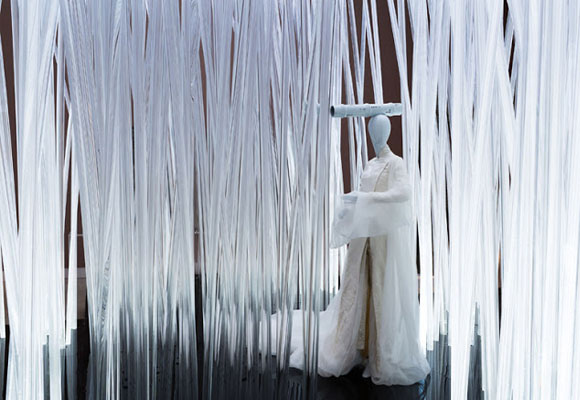
The aim of this exhibition is to show the impact of China in Western fashion, the image of China in the imagination of the West, the Chinese history, aesthetics, art, the reality of a country and the image of that reality embedded in the minds of the main creators of the world of fashion and film.
From my point of view, there are six key elements in the exhibition: fashion, film, music, lighting, objects of Chinese art and mirrors, many mirrors in the walls of the halls, the stands where fashion designs are shown, mirrors where the moon is reflected and takes life in its reflection, yards and yards of black lacquered mirrors that transport you to the naive fiction of a world of fantasy, the reflection in the mirror, your reflection and the world behind. It makes me think that it seems that East and West have gone hand in hand throughout history with a mutual understanding, because the display has a harmonious and aesthetic dance with a perfect blend of both cultures.
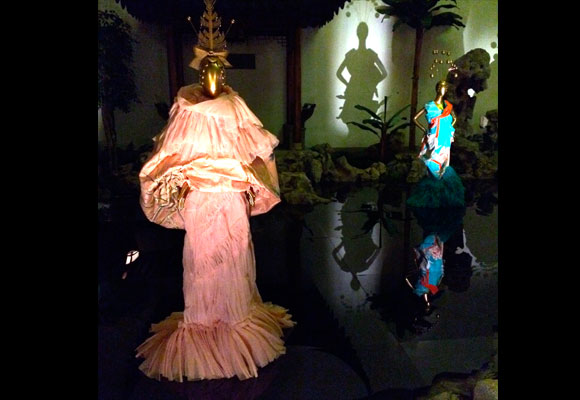
There has been no lack of criticism to this glamorous and dreamful exhibition, where movies and fashion designs are reinterpreting China, its iconography, its culture, its art, its history from a Western point of view and where the designs on their mannequins are aligned to Chinese art simply for its aesthetic looking, aside on display the faithful worship of a culture to make way for a fantasy world, where creativity takes power.
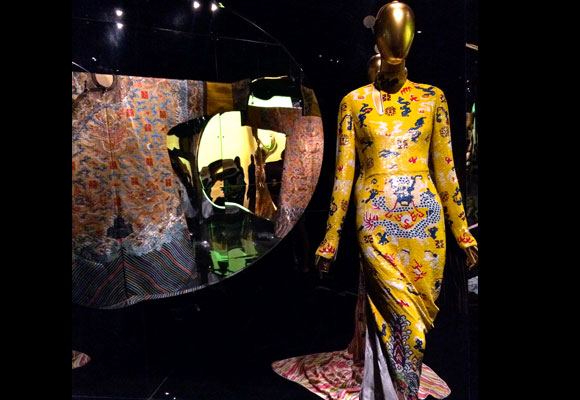
Hollywood was the main window to the West that has shown the greatness of one of the most ancient civilizations and enriched cultures of the world; an industry that has been shaping the Westernized image of China. Parts of movies from the golden years of Hollywood are projected and show an unreal image of China with a fantasy revolving around the exoticism of its culture, so distant from ours. One example has been the use of the dragon, represented so many times in American movies in the form of «dragon lady», cruel, dominating and mysterious, when the Chinese dragon symbol actually represents power and excellence, courage and boldness, heroism and perseverance, nobility and divinity and is, in short, a sign of good fortune.
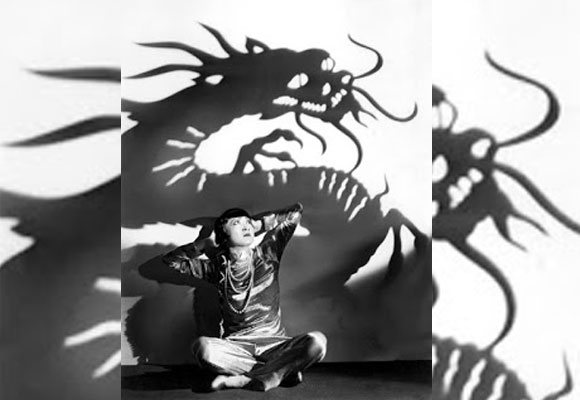
But despite this westernized interpretation of China, the creativity that exhibit the fashion designs of the more than forty most emblematic fashion designers is outstanding. We can find models from Chanel, Dior, Karl Lagerfeld, Tom Ford, Roberto Cavalli, Alexander McQueen, Balenciaga, Maison Matin Margiela, YSL, Ralph Lauren and many more.
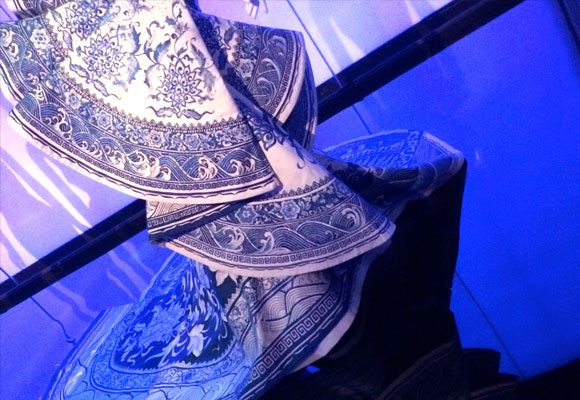
The staging of the exhibition «China: Through the looking glass», as noted in the so cleverly chosen title, makes you feel you are «Alice», the main character of Lewis Carroll’s book, crossing the mirror that takes you into a fantasy world, where everything makes you forget what is outside those walls; where reality is mixed with fiction, where everything has a thousand faces, depending on the angle from which you look at it.
